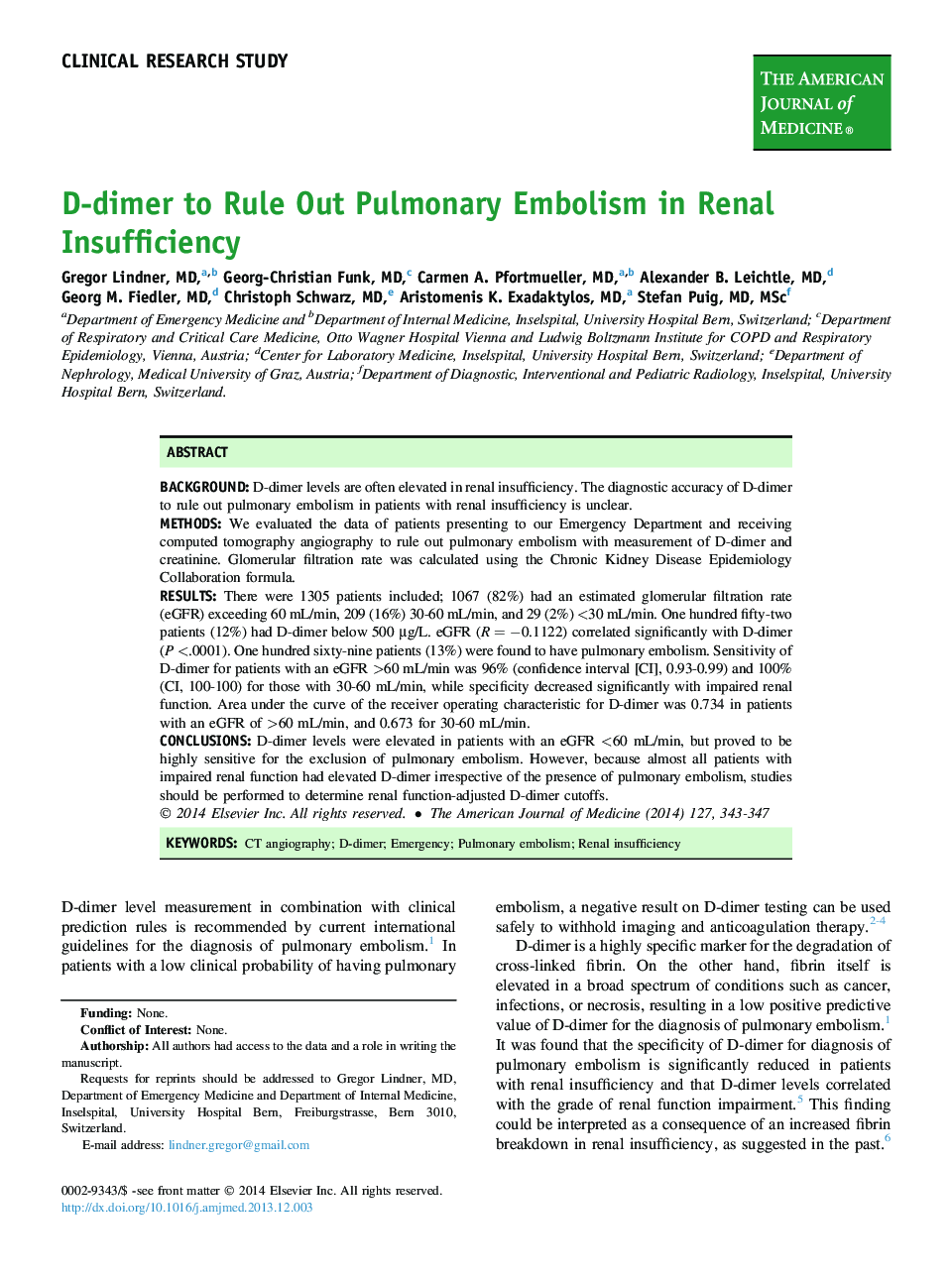| Article ID | Journal | Published Year | Pages | File Type |
|---|---|---|---|---|
| 2722658 | The American Journal of Medicine | 2014 | 5 Pages |
BackgroundD-dimer levels are often elevated in renal insufficiency. The diagnostic accuracy of D-dimer to rule out pulmonary embolism in patients with renal insufficiency is unclear.MethodsWe evaluated the data of patients presenting to our Emergency Department and receiving computed tomography angiography to rule out pulmonary embolism with measurement of D-dimer and creatinine. Glomerular filtration rate was calculated using the Chronic Kidney Disease Epidemiology Collaboration formula.ResultsThere were 1305 patients included; 1067 (82%) had an estimated glomerular filtration rate (eGFR) exceeding 60 mL/min, 209 (16%) 30-60 mL/min, and 29 (2%) <30 mL/min. One hundred fifty-two patients (12%) had D-dimer below 500 μg/L. eGFR (R = −0.1122) correlated significantly with D-dimer (P <.0001). One hundred sixty-nine patients (13%) were found to have pulmonary embolism. Sensitivity of D-dimer for patients with an eGFR >60 mL/min was 96% (confidence interval [CI], 0.93-0.99) and 100% (CI, 100-100) for those with 30-60 mL/min, while specificity decreased significantly with impaired renal function. Area under the curve of the receiver operating characteristic for D-dimer was 0.734 in patients with an eGFR of >60 mL/min, and 0.673 for 30-60 mL/min.ConclusionsD-dimer levels were elevated in patients with an eGFR <60 mL/min, but proved to be highly sensitive for the exclusion of pulmonary embolism. However, because almost all patients with impaired renal function had elevated D-dimer irrespective of the presence of pulmonary embolism, studies should be performed to determine renal function-adjusted D-dimer cutoffs.
